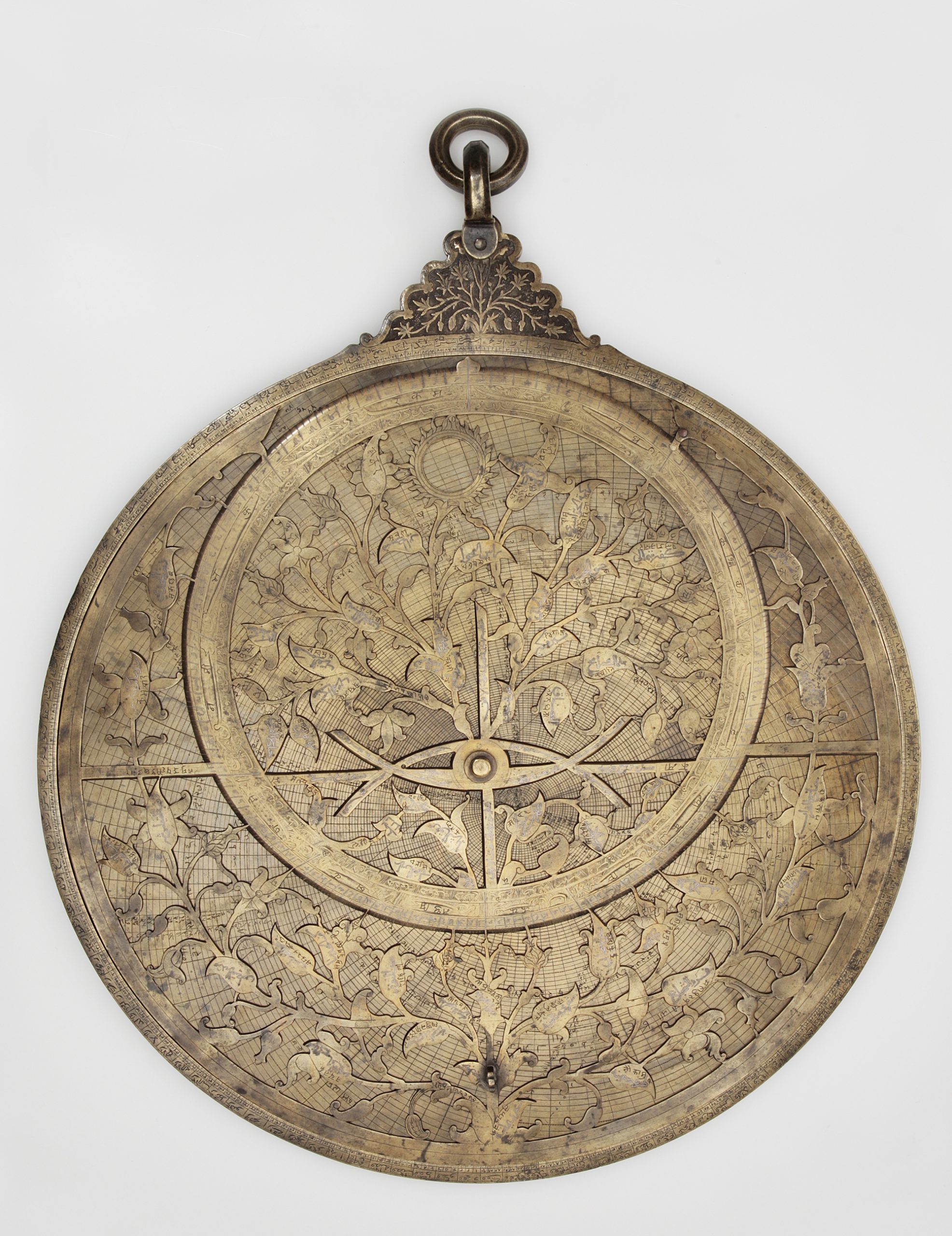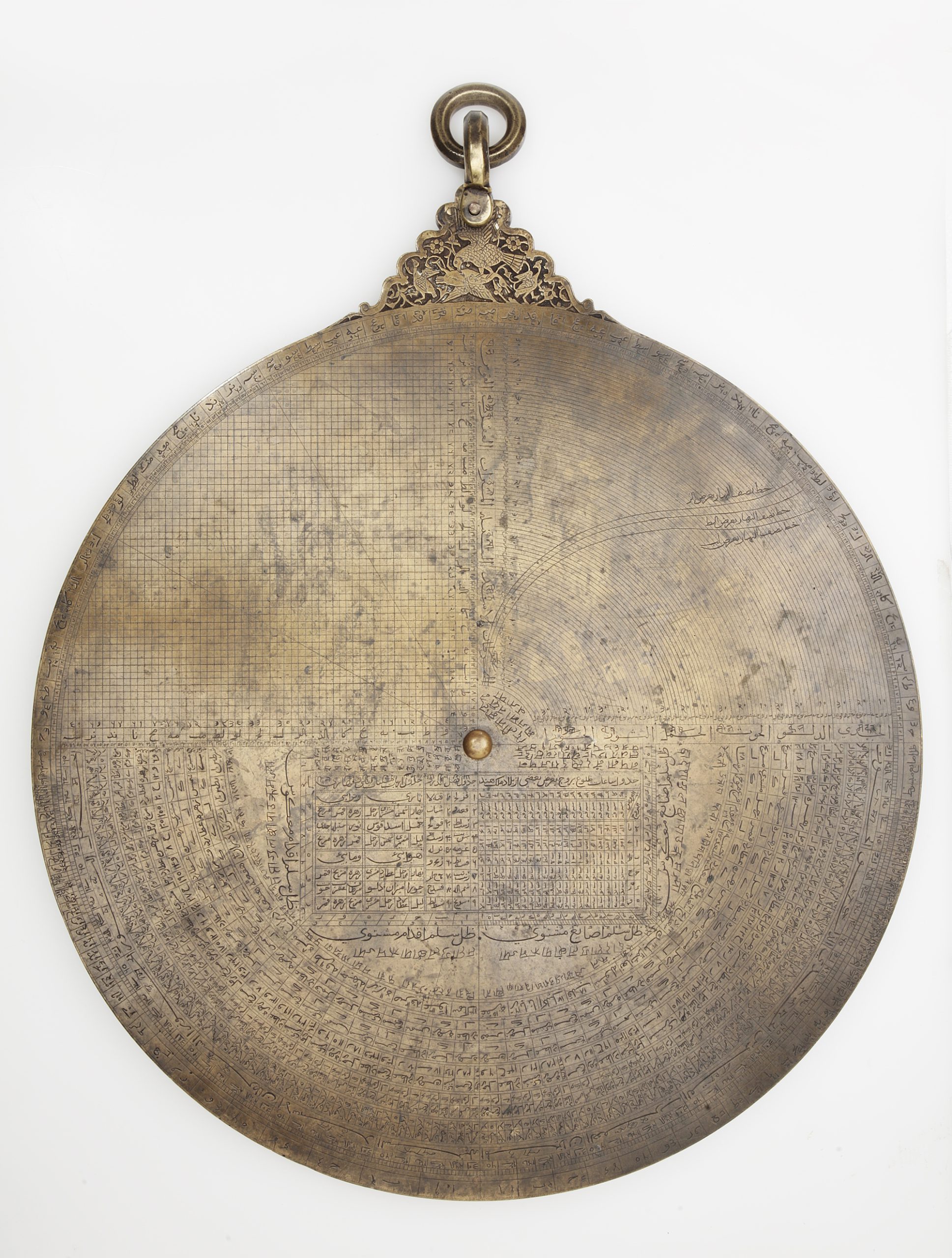 Print Page
Print Page
 Print Page
Print Page
Location: Punjab, Lahore
Materials: brass, sheet and cast, cut and engraved, the rete inlaid with silver
Dimensions: diameter 52.6 cm height 60.2 cm (excluding shackle and suspension ring)
Accession Number: SCI 53
Other Notes:
The astrolabe, an invention of Hellenistic Alexandria, was the principal Islamic instrument for telling the time, surveying and determining latitude. By the later 9th century it was used throughout the Islamic world from Spain to India and later reached Christian Europe. By modelling the apparent rotation of the stars about the celestial pole, it solves a number of astronomical, and astrological, problems. Notably, the provision of a simple sighting device made it possible to calculate the elevation of a particular star, or of the sun, and thus both determine the time and indicate the direction of the North Pole. Moreover, although an astrolabe does not show the movement of the planets, planetary tables enabled the astrologer to know the position of a planet relative to the constellations of the zodiac, which are generally engraved on the plates. The instrument consists of a solid body, the mater, into which fit a series of plates and a revolving circular web-like star map, called the ‘rete’ in Europe and the ‘ankabut (‘spider’) in the Islamic world. The various elements, supplemented by a sighting vane (the alidade), on the back of the instrument, were held together by a pin.
The rete of this astrolabe is designed as a branching stem, each branch with several pointed leaves which serve as star pointers, labelled in Sanskrit as well as Arabic. There are six plates for different latitudes. On some the length of the longest day is given not in hours and minutes but in ghati, an Indian division of the day corresponding to 24 minutes, illustrating the yoking of the Hindu and Muslim astronomical and astrological traditions.
Script:
most probably the work of Diya’ al-Din Muhammad Lahuri
with six plates
Bibliography:
F. Maddison & E. Savage-Smith, Science, Tools & Magic, The Nasser D. Khalili Collection of Islamic Art, volume XII, Part One, London 1997, cat.133, pp.230–33.
J.M. Rogers, The Arts of Islam. Masterpieces from the Khalili Collection, London 2010, cat.366, pp.310–11.

